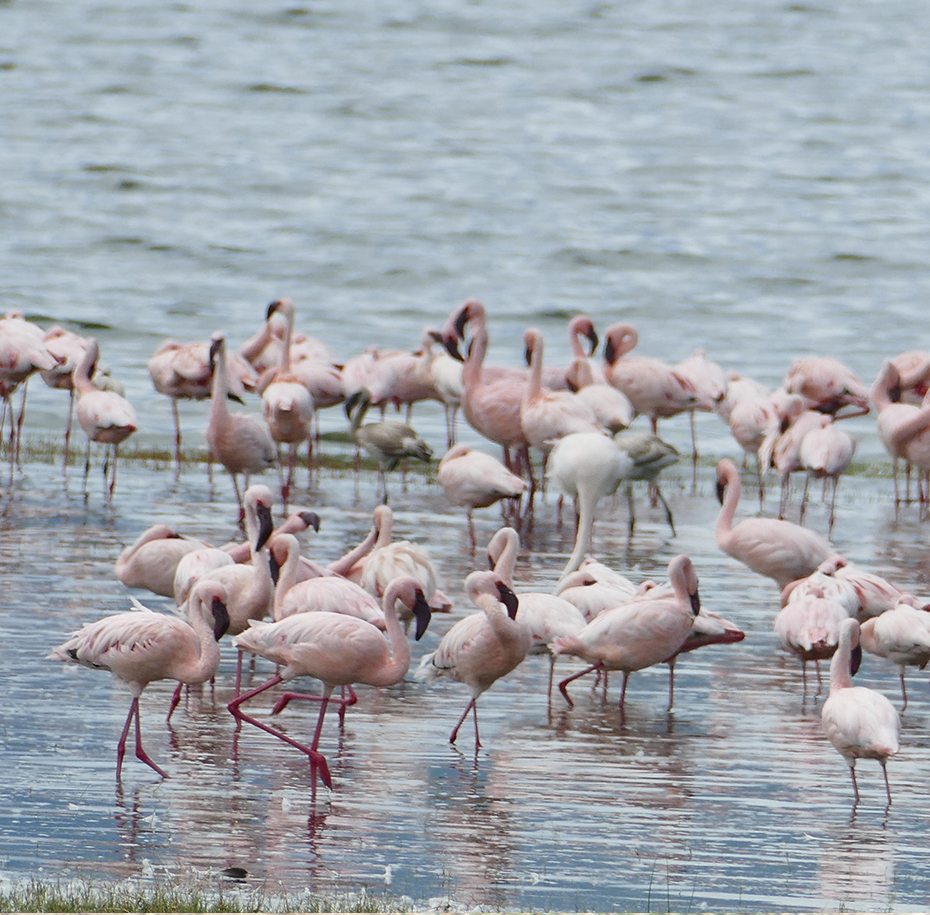Discover the Scenic Beauty of Lake Manyara National Park
Lake Manyara National Park, located in northern Tanzania, is a breathtaking wildlife reserve famous for its diverse ecosystems and stunning landscapes. Nestled at the base of the Great Rift Valley escarpment, the park is home to the alkaline Lake Manyara, which attracts thousands of flamingos and other bird species. Known for its tree-climbing lions, large elephant herds, and lush groundwater forests, Lake Manyara offers a unique and unforgettable safari experience.
Why Visit Lake Manyara National Park?
A Unique Blend of Wildlife, Birdlife, and Scenic Landscapes
- Tree-Climbing Lions: One of the few places in Africa where lions are known to regularly climb trees, Lake Manyara offers the rare opportunity to see these majestic animals lounging in acacia trees.
- Birdwatcher’s Paradise: Lake Manyara is a haven for bird enthusiasts, with over 400 species recorded. The lake’s shores are often tinged pink with flamingos, and you can spot a variety of other waterbirds, including pelicans, storks, and kingfishers.
- Diverse Ecosystems: The park features a remarkable variety of habitats in a relatively small area, including lush groundwater forests, open savannahs, acacia woodlands, and the soda lake itself. This diversity supports a wide range of wildlife and offers stunning scenery.
- Large Elephant Herds: Lake Manyara is famous for its elephant population. The park’s forests and floodplains provide ideal conditions for these gentle giants, allowing for close encounters on game drives.
- Scenic Great Rift Valley: The dramatic backdrop of the Great Rift Valley escarpment adds to the park’s scenic beauty, making it one of the most picturesque locations in Tanzania.

Top Attractions in Lake Manyara National Park
- Lake Manyara
- The alkaline lake is the park’s centerpiece, attracting a variety of waterbirds, including flamingos, pelicans, and herons. The lake’s shallow waters also provide excellent opportunities for birdwatching and photography.
- Tree-Climbing Lions
- The park’s lions are famous for their unusual habit of climbing trees, a behavior not commonly seen in other parts of Africa. Spotting these lions resting in the branches of acacia trees is a highlight of any visit.
- Hippo Pool
- Located near the park’s southern end, the hippo pool is a great place to observe these massive animals wallowing in the water. It’s also a hotspot for birdlife and offers stunning views of the surrounding landscape.
- Groundwater Forest
- The lush groundwater forest at the park’s entrance is fed by underground springs and is home to a variety of animals, including elephants, baboons, and blue monkeys. The towering fig and mahogany trees provide a cool, shaded environment that contrasts with the open savannah.
- Great Rift Valley Escarpment
- The towering cliffs of the Great Rift Valley escarpment form a dramatic backdrop to the park. The escarpment offers panoramic views of the lake and surrounding plains, making it a perfect spot for photography.
Safari Activities in Lake Manyara National Park
Explore Lake Manyara with Lion View Tour
- Game Drives: Our guided game drives take you through the diverse landscapes of Lake Manyara National Park. Whether you’re exploring the lush forests, open plains, or the lakeshore, you’re sure to encounter a variety of wildlife, from elephants to lions.
- Bird Watching: Lake Manyara is a birdwatcher’s paradise. Join our specialized birdwatching tours to spot flamingos, pelicans, and other avian species in their natural habitats. Our guides are experts in identifying the park’s many bird species.
- Canoeing Safaris: For a unique perspective, take a canoeing safari on Lake Manyara. Glide along the calm waters, getting up close to the waterbirds and enjoying unobstructed views of the wildlife along the shore.
- Night Game Drives: Experience the park after dark with a night game drive. This thrilling activity offers the chance to see nocturnal animals like bush babies, genets, and perhaps even the elusive leopard.
- Cultural Visits: Combine your safari with a visit to nearby villages. Engage with the local communities, learn about their traditions, and experience the vibrant culture of the region.
Best Time to Visit Lake Manyara
Experience the Park at Its Best
- Dry Season (June to October): The dry season is the best time for wildlife viewing at Lake Manyara. As water sources dwindle, animals congregate around the lake and other permanent water sources, making them easier to spot. The weather is warm and dry, and the vegetation is less dense.
- Wet Season (November to May): The wet season transforms Lake Manyara into a lush, green paradise. This is the best time for birdwatching, as migratory birds arrive in large numbers. The landscape is vibrant, and many animals give birth during this period, providing excellent photographic opportunities.
- April to May: Known as the long rains, this period sees fewer tourists, offering a more private safari experience. The park is particularly beautiful during the rains, with the waterfalls in the escarpment flowing at full force.
Accommodation in Lake Manyara National Park
Stay in Comfort with Stunning Views
- Luxury Lodges: Enjoy unparalleled comfort and luxury at one of the lodges located near the park. With stunning views of the lake and escarpment, these lodges offer exceptional service, gourmet dining, and a range of amenities.
- Tented Camps: Experience the thrill of staying in a tented camp where you can enjoy the sounds of nature while relaxing in comfort. These camps offer en-suite facilities, delicious meals, and excellent service.
- Eco-Lodges: For eco-conscious travelers, there are several eco-lodges that offer sustainable accommodations. These lodges minimize their environmental impact while providing a comfortable stay close to nature.
- Budget Options: For travelers on a budget, there are a variety of affordable accommodations available, including campsites and basic lodges, all with easy access to the park.

Plan Your Lake Manyara Safari with Lion View Tour
Ready to Explore Lake Manyara National Park?
Lion View Tour offers personalized safaris to Lake Manyara National Park, allowing you to experience its diverse wildlife, stunning landscapes, and unique attractions. Whether you’re an avid birdwatcher, a wildlife enthusiast, or simply looking to enjoy the beauty of Tanzania, we’ll create the perfect safari for you.
